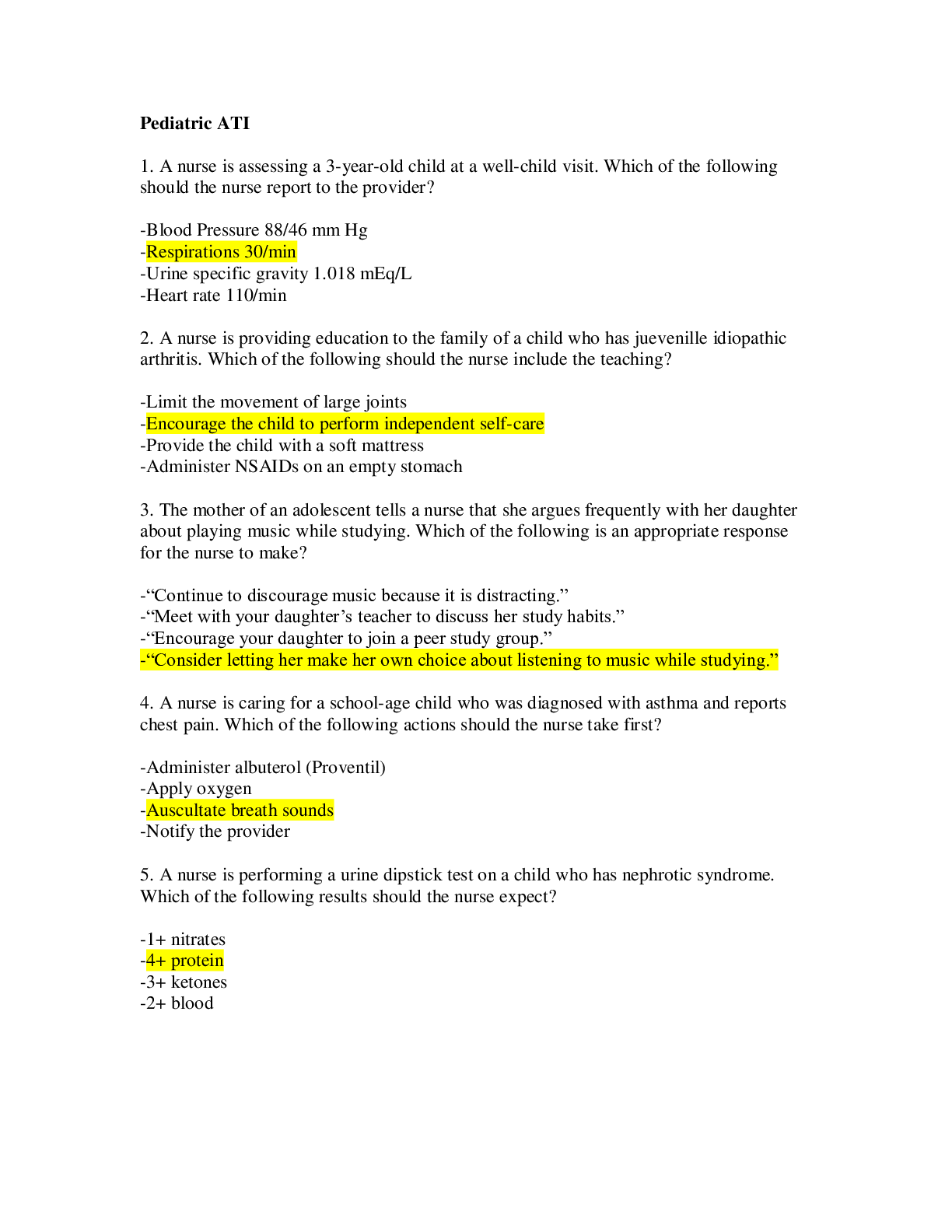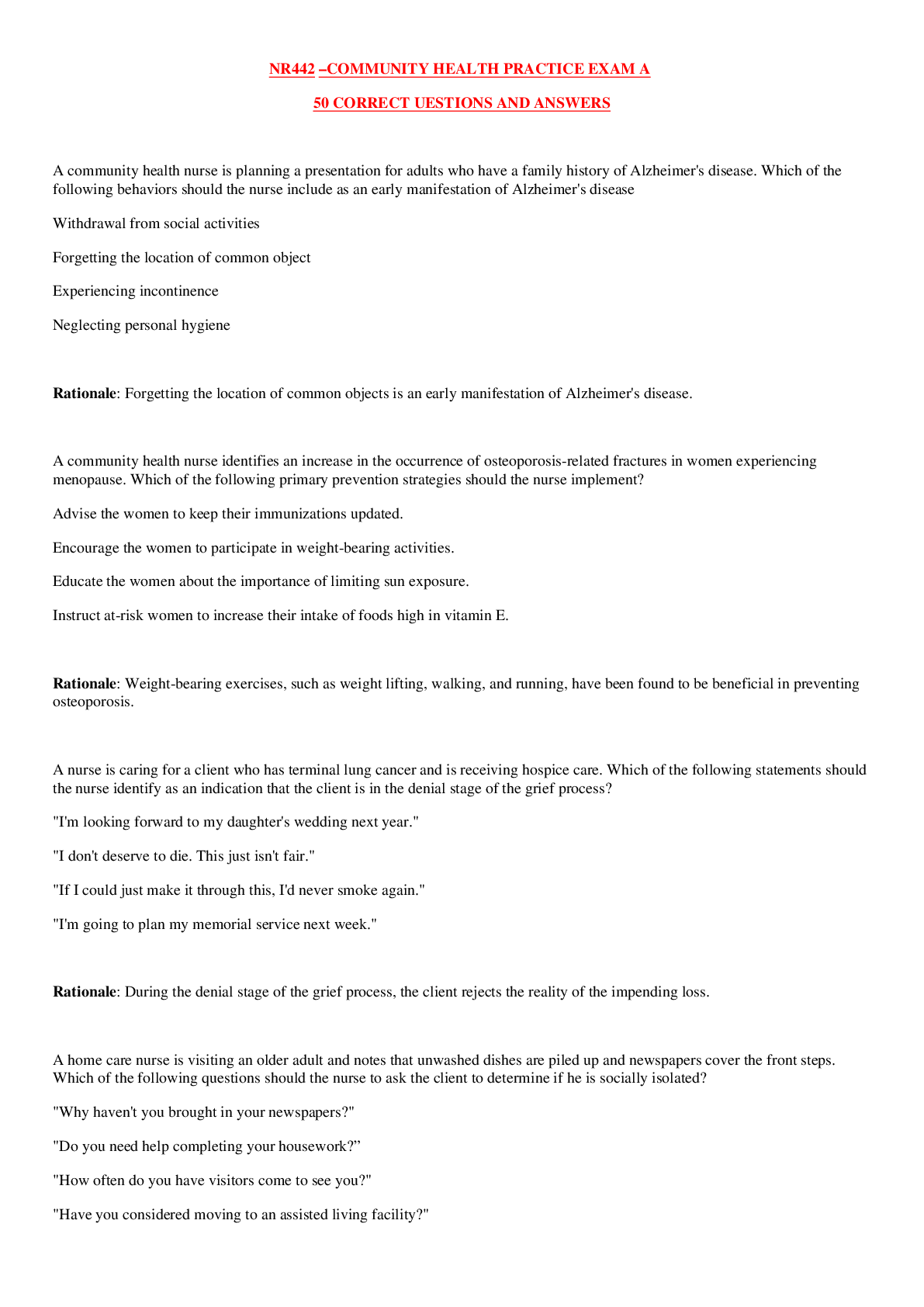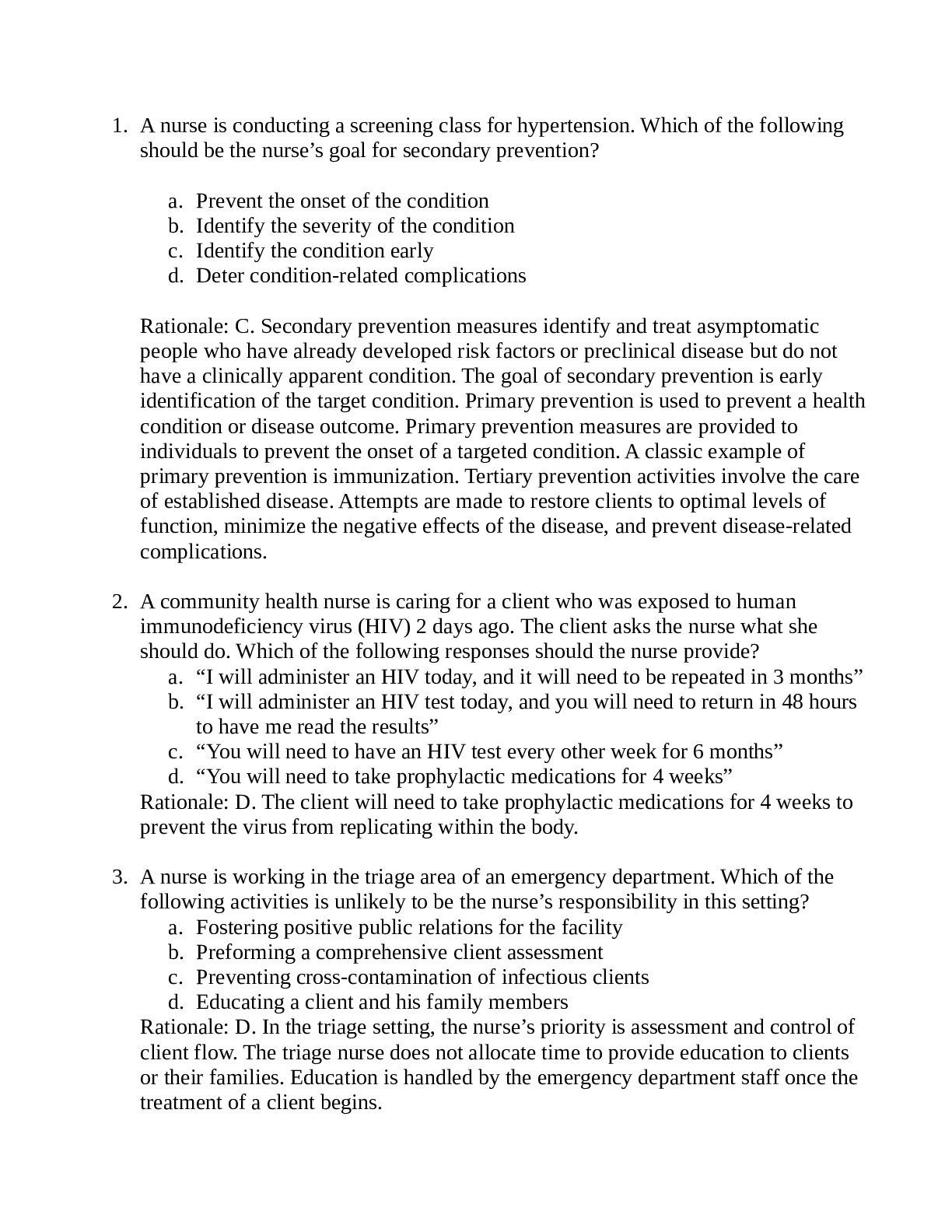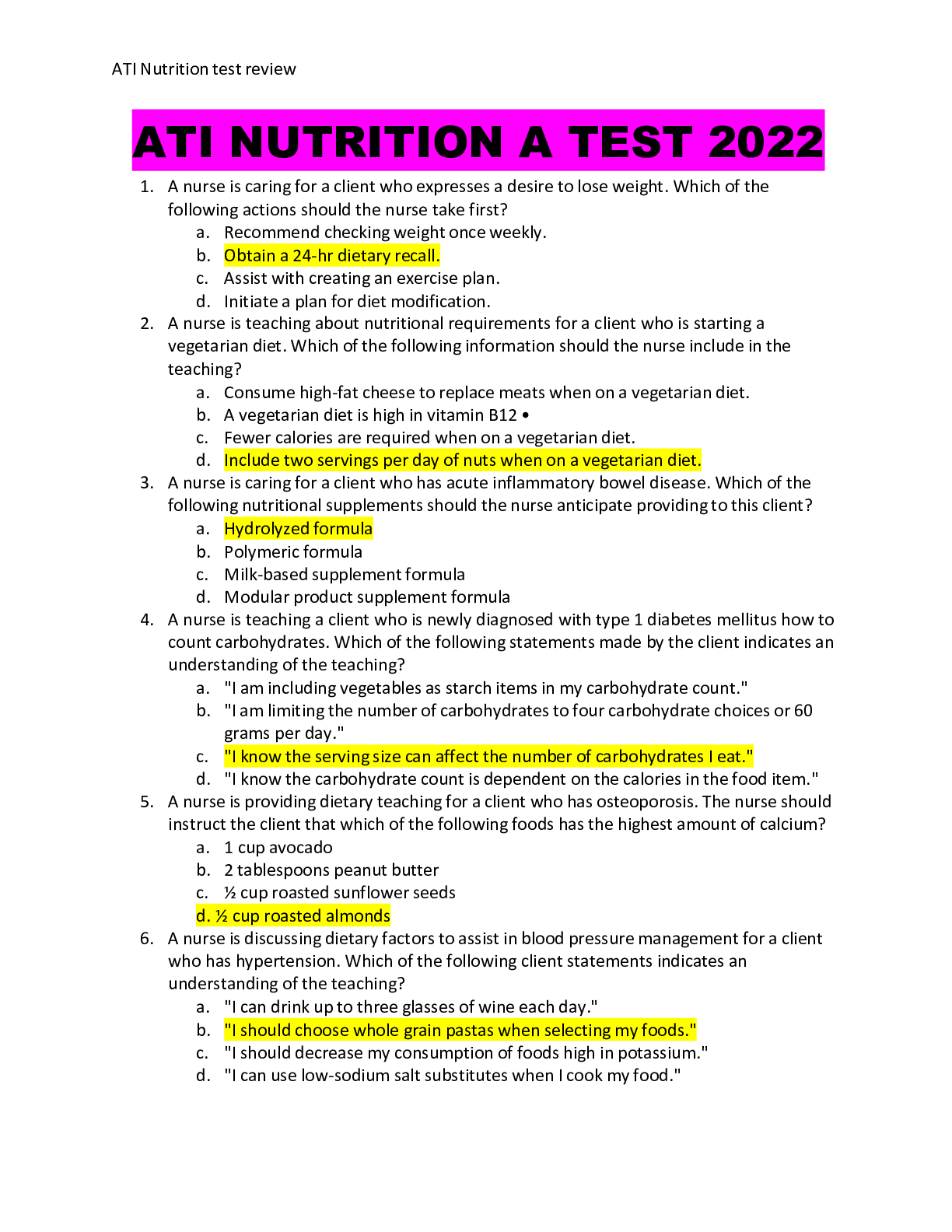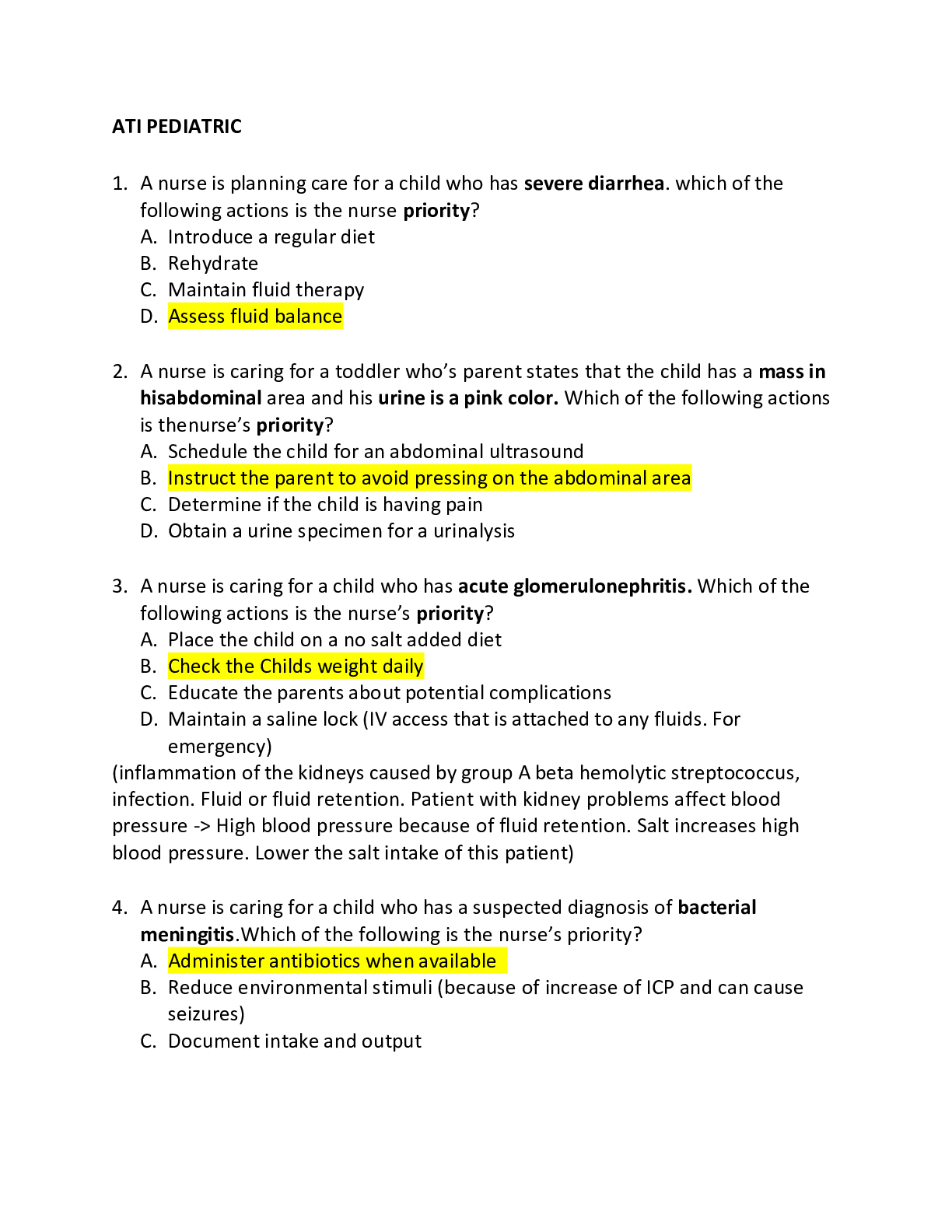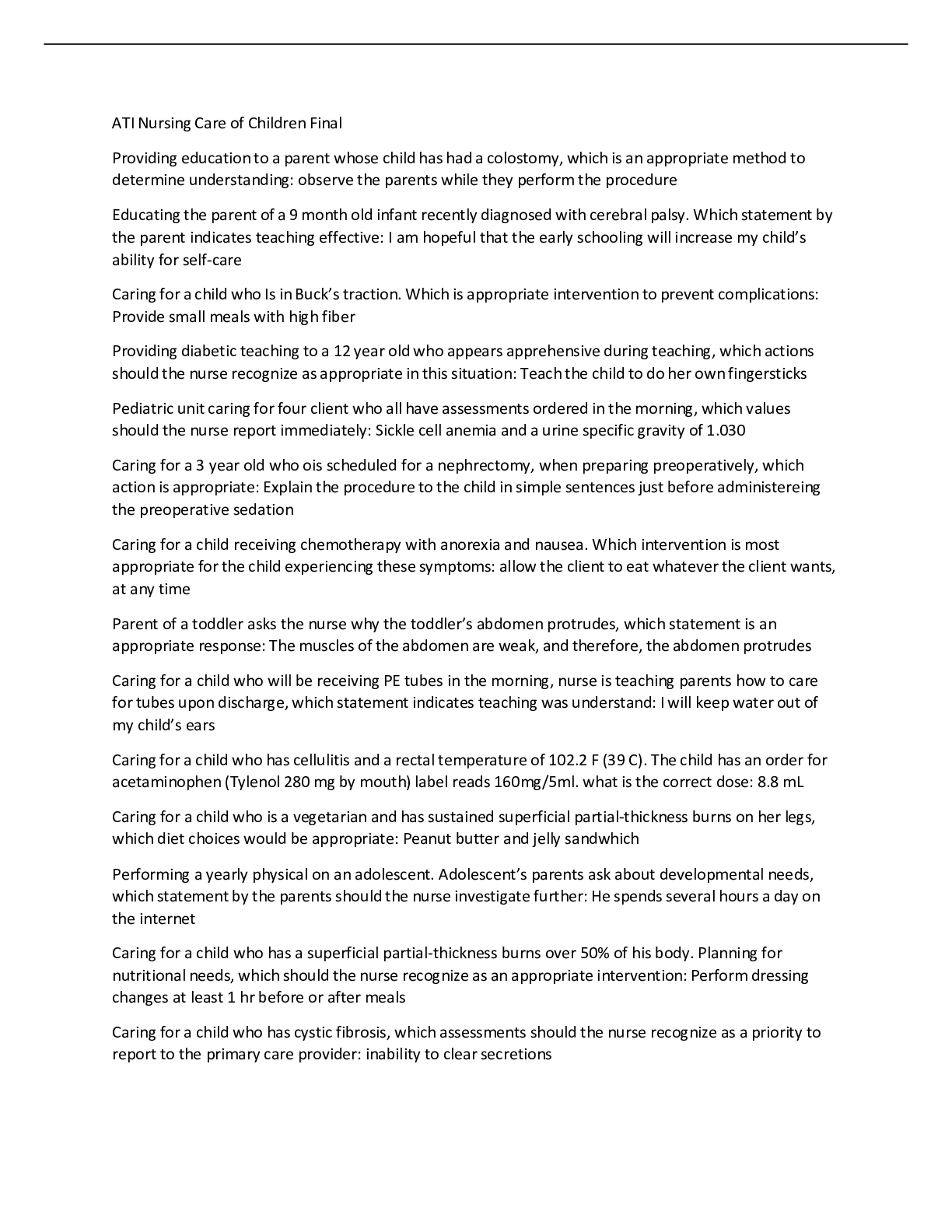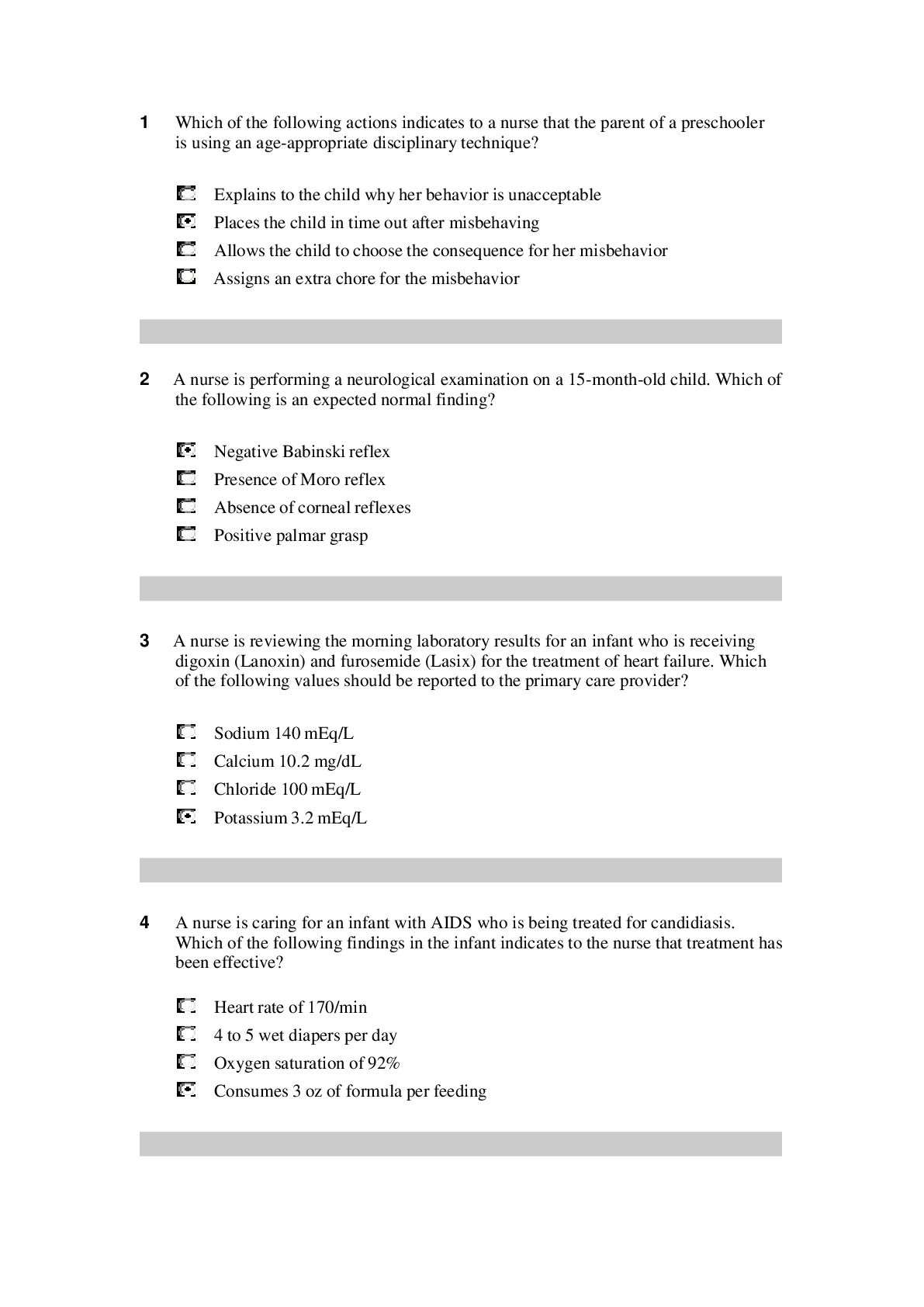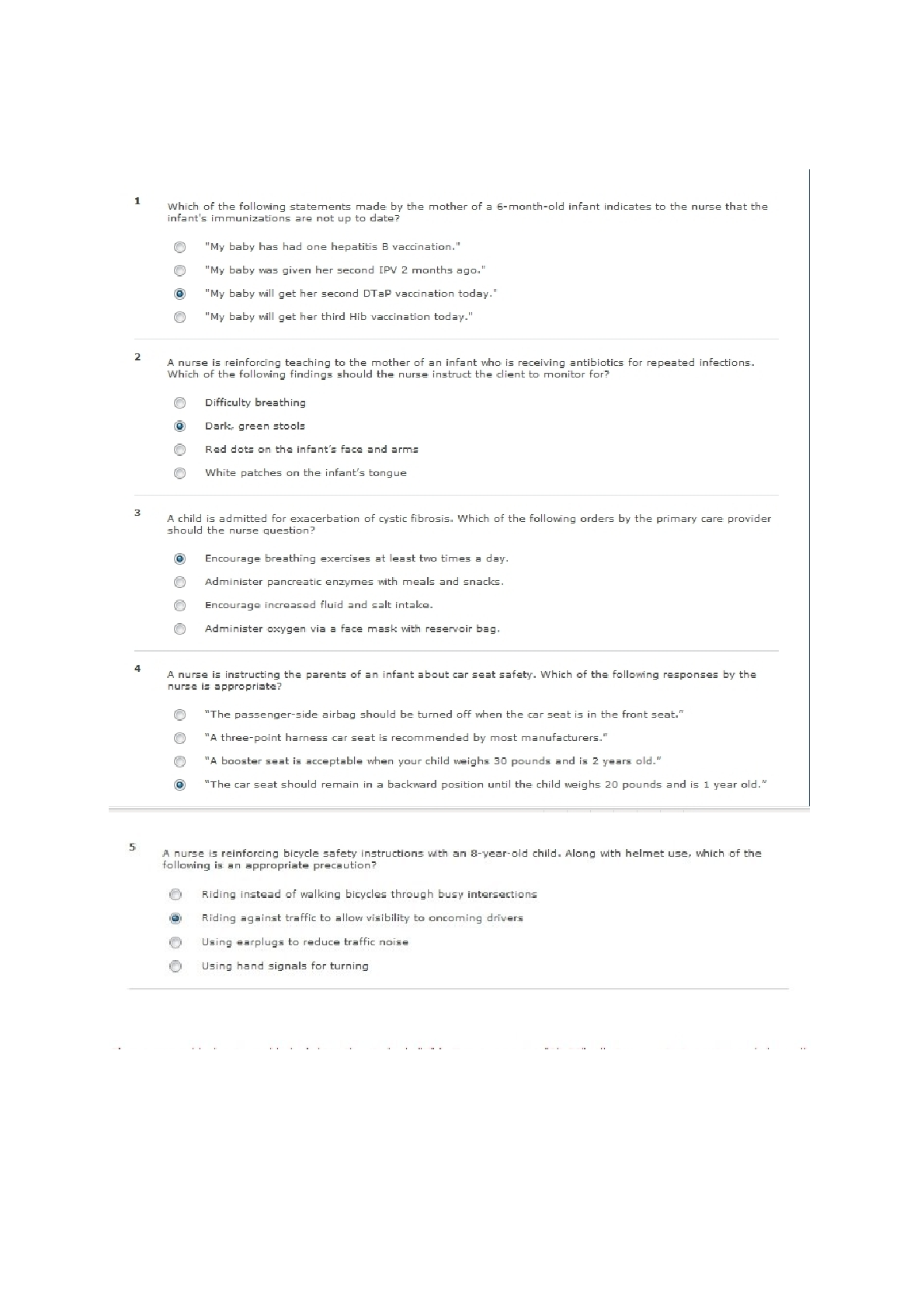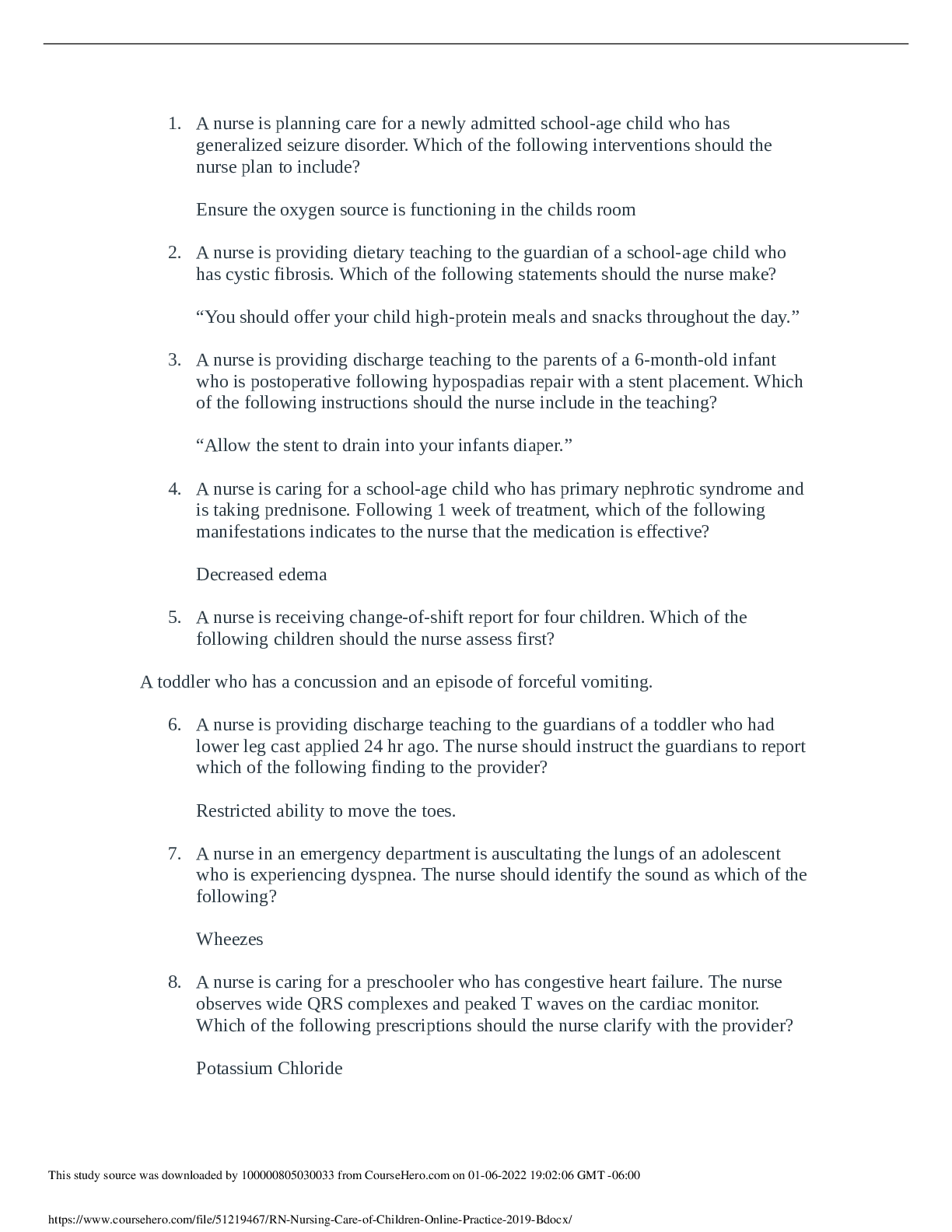ATI RN NURSING CARE OF CHILDREN 2016 B
Document Content and Description Below
ATI RN NURSING CARE OF CHILDREN 2016 B 1. A nurse is assessing a 4-year-old child at a well-child visit. Which of the following developmental milestones should the nurse expect to observe? a. Identi... fies right from left hand b. Uses a utensil to spread butter c. Cuts a shape using scissors d. Draws a stick figure with seven body parts Answer - c. Cuts a shape using scissors A- Identifying the right from left hand is an expected developmental milestone of a 6-year-old child. B- Using a utensil to spread butter is an expected developmental milestone of a 6-year-old child. D- Drawing a stick figure with seven body parts is an expected developmental milestone of a 5- year-old child. 2. A nurse in the emergency department is assessing a toddler who has Kawasaki disease. Which of the following findings should the nurse expect? (select all that apply.) a. Increased temperature b. Gingival hyperplasia c. Xerophthalmia d. Bradycardia e. Cervical lymphadenopathy Answer- a,c,e Increased temperature is correct. Kawasaki disease is an acute illness associated with a fever lasting more than 4 days that is unresponsive to antipyretics or antibiotics. Gingival hyperplasia is incorrect. Children who have Kawasaki disease develop a strawberry tongue, cracked lips, and edema of the oral mucosa and pharynx. A child who is receiving phenytoin therapy can develop gingival hyperplasia. Xerophthalmia is correct. Ophthalmic manifestations of Kawasaki disease include reddening of the conjunctiva and dryness of the eyes, or xerophthalmia. Bradycardia is incorrect. Kawasaki disease is an infection that affects the vascular system, including the heart. The nurse should expect the child to be tachycardic with a gallop rhythm. Long term effects of Kawasaki disease include the development of coronary artery aneurysms or myocardial infarction. Cervical lymphadenopathy is correct. The child who has Kawasaki disease may develop enlarged cervical nodes on one side of the neck that are nontender and greater than 1.5 cm in size. [Show More]
Last updated: 1 year ago
Preview 1 out of 27 pages
Instant download
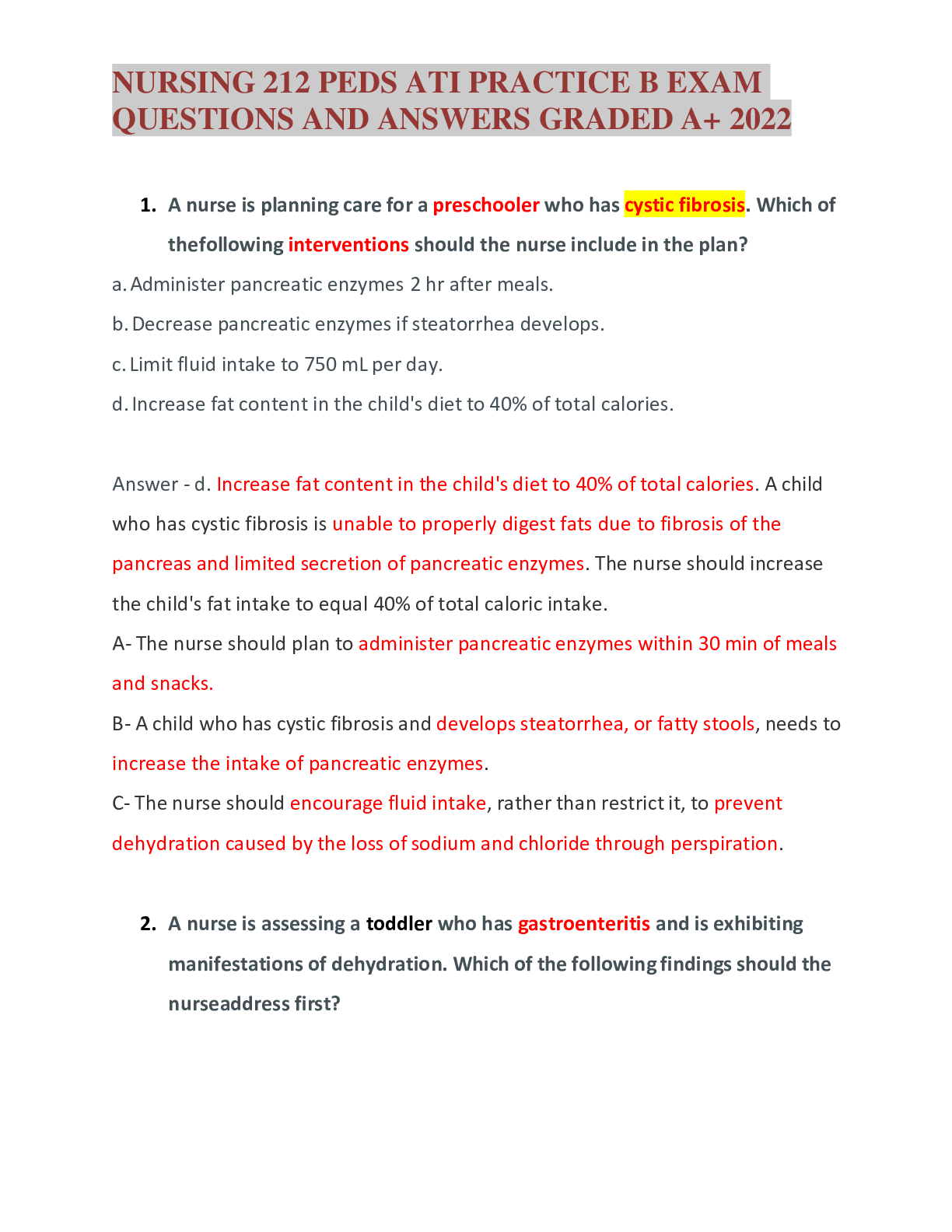
Buy this document to get the full access instantly
Instant Download Access after purchase
Add to cartInstant download
Reviews( 0 )
Document information
Connected school, study & course
About the document
Uploaded On
Sep 05, 2021
Number of pages
27
Written in
Additional information
This document has been written for:
Uploaded
Sep 05, 2021
Downloads
0
Views
66

